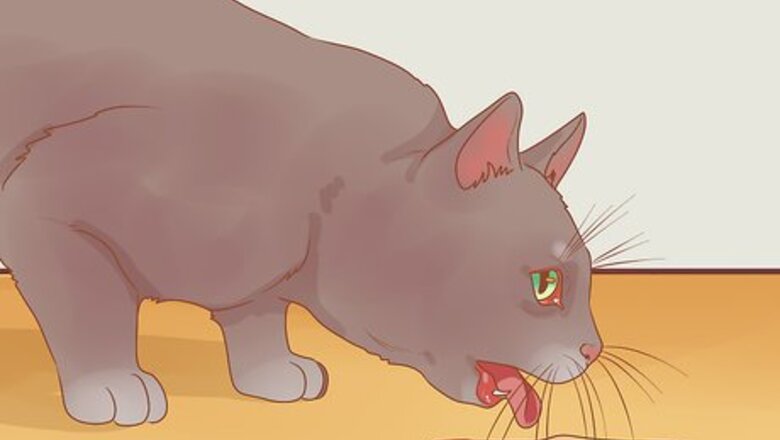
views
Making a Tough Decision
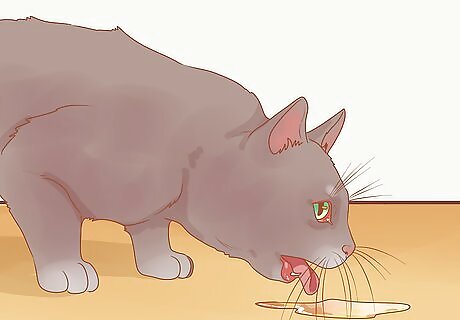
Decide whether your cat needs to be put to sleep. Besides a cat being in pain from an inoperable or untreatable condition, there is the cat’s quality of life that needs to be taken into consideration. Talk to your veterinarian about any concerns you have regarding your pet's quality of life. These can include the following factors: Complete loss of appetite or unwillingness or inability to eat Trouble standing or walking. Falling over when standing or trying to walk. Difficulty with breathing or every breath is labored Incontinence or soiling problems Chronic pain or inability to get comfortable Chronic vomiting or diarrhea that threatens to leave your pet dehydrated

Prepare yourself to say goodbye. Before making the appointment you will want to prepare yourself and your family members for life without your beloved cat. Make sure you have photos of your cat, spend some time with your cat petting and comforting it, and giving it a special treat or food. Remember to let any people that cared for and loved the cat join in this process. Do not lie to them that the cat is going to another home or that it ran away. Instead, explain to them the decision making process to euthanize the cat and explain the death to them in an age appropriate manner. An excellent book for kids is When a Pet Dies by Fred Rogers of Mr. Roger’s Neighborhood fame.

Decide how you would like your cat's end of life to happen. You will need to decide if you want to be with your cat to the end of its life. Only you can decide if you want to present for the process. Some people want to be, some don’t. It only depends on what is right for you and your cat. Most veterinarians and their staff will be fine with you being present and will explain the process to you. If you can’t be present they will understand that decision as well. When you call for the appointment to euthanize your cat you can ask if they will come to your home to do the euthanasia. Many cats get extremely anxious or stressed out with car rides or being at the veterinarian’s office, so this may be a final kind thing you can do for your cat. Or you may prefer to have it done at the veterinarian’s office to avoid unpleasant memories at home. Either the way the procedure is similar.
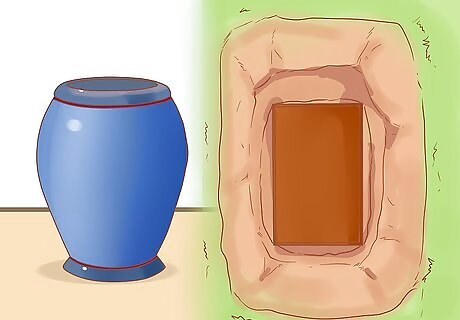
Decide what you want to happen with your cat's body. You will need to decide on the disposition of the body after the euthanasia is completed, basically whether you want the cat's body cremated or not. Connected to this, you will also decide whether you want to take its ashes or body home with you for burial. Do you have a box or a special blanket to wrap the body in? Or will you decide to have the veterinarian’s office arrange for cremation, which will add more money to the final bill. Do you have room to bury the body in your yard? Can you dig in the yard if it’s winter time? Is there a safe spot to dig? You may have to check with your local utilities to make sure you don’t damage any buried lines on your property.
Getting Your Cat Euthanized
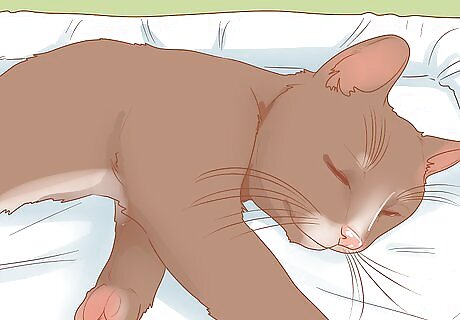
Bring your cat to the veterinary office or prepare a space in your home, if the euthanasia is happening at home. Pay any fees upfront, as you don't want to have to deal with this after your cat has passed away. Try to stay calm for the cat's sake. It will not know what is going on, so its best to not make is scared at the end of its life.
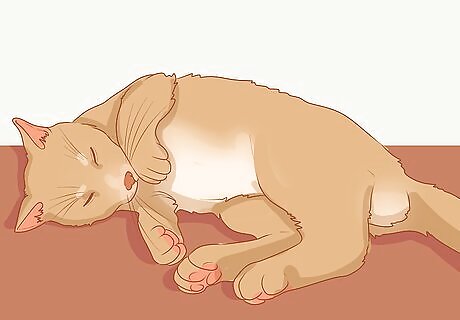
Understand how your cat will be euthanized. Many times a sedative will be given to your cat in one of its muscle. This will help it relax, as the euthanasia solution needs to be given in the vein, usually using a front leg vein. After access to the vein is achieved the solution is slowly given and the cat’s heart will soon stop. This normally takes place very quickly. Many veterinarians will place a small catheter into the vein while others are adept at using a plain needle on a syringe full of the euthanasia solution. The veterinarian will usually need their assistant to help hold the pet and keep its leg steady, but you should be able to stroke and speak to your pet if you want to. Occasionally a cat with heart or circulation troubles will take a bit more time for the solution to work. The cat may give a sigh or a couple of deep breaths. The veterinarian will check with his or her stethoscope to make sure your cat’s heart is stopped before pronouncing your cat dead. They will assist you in respectfully readying your cat’s body for a proper disposition.

Grieve for your pet. Grieving at the loss of your beloved companion is normal. Your cat gave you companionship, loyalty and unconditional love which will be sorely missed. Everyone grieves differently: some cry, some get angry, some feel sadness. Here are some tips to help you cope with your loss: Create a memorial. This could be a spot on a shelf with your cat’s framed photo, a special photo album with photos or you could plant a tree or bush in your cat’s memory. Write your feelings in a journal. Ask your humane society or veterinarian if there are any pet loss support groups in the area. Call a pet loss hotline to speak with a counselor Most of all remember the happy times with your cat and enjoy those good memories.














Comments
0 comment